Chip Phillips: 5 Tips for Photographing in Winter
We love Chip Phillips’s winter photographs. He has some stunning photos from the Rockies that just make us want to go out and photograph winter landscapes no matter how cold it is out there. So when we invited Chip to become a contributor to Visual Wilderness, we thought it would be a good idea to start out with an article on tips to photograph winter landscapes.
I’ve done a lot of winter photography in the Canadian Rockies, the Tetons, and various mountains in my home state of Washington and it’s one of my favorite times to shoot. Ice and snow can convey so much drama and color, and create really beautiful and unusual opportunities for composition. It does, however, come with its own set of challenges. Here are some tips that I’ve found helpful along the way.
Tip #1: Dress warm.
As we all know, landscape photography involves a lot of standing around and waiting for the light. When the temperatures drop you can get cold fast. Dress in layers to keep your body warm. I use a SmartWool mid-weight base and layer up with fleece and a down jacket. It’s also essential to keep your hands warm. I use two pairs of gloves – one pair of heavy mittens and a pair of lightweight gloves that I keep on and can still operate the controls on my camera. I use hand warmer packets in both my shoes and my mittens. Get these heated up while you’re still indoors so they’re warm when you step out. I also keep my face and ears covered with a balaclava (ski mask).
Tip #2: Bring the snowshoes.
You know when you step in snow and you sink down to your waist? Walking any distance in that kind of snow is exhausting and takes forever. Bring snowshoes or cross country/back country skis to get away from the parking lot. Even snowshoeing a short distance from where you parked can give you countless more photographic opportunities; you don’t necessarily have to go far. Quite a few of my winter shots were taken while wearing either snow shoes or back country skis. I picked up a cheap pair of snowshoes at an REI “scratch and dent” parking lot sale.
Tip #3: Use the snow to reflect colorful light.
White snow is a wonderful canvas for colorful light. Choose compositions that include fresh snow in the foreground to make use of light during the golden hours.
Tip #4: Prepare your equipment.
Taking warm equipment directly out into the winter cold can cause problems. Condensation can form and your lenses can fog up. While it is not a good idea to leave expensive equipment in the car overnight, try to store your equipment in a cool dry area before heading outside. Batteries also don’t like the cold; they can die more quickly. If your battery is old and it’s extremely cold, it can die instantly. Keep one or two spare batteries in an inside pocket to keep them warm.
Tip #5: Just do it.
Just get up and go… even if it’s miserable out. How else can you get a stunning photograph? With the right collection of gear and the right techniques, winter photography can be breathtaking.
We are looking forward to more articles from Chip Phillips on Visual Wilderness. In meantime check out some stunning images and post processing tutorials on Chip’s website.

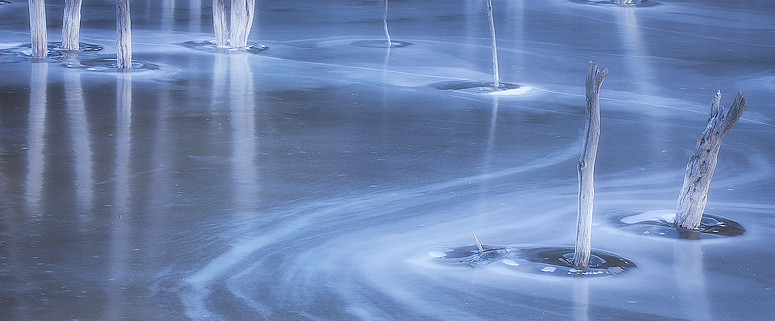
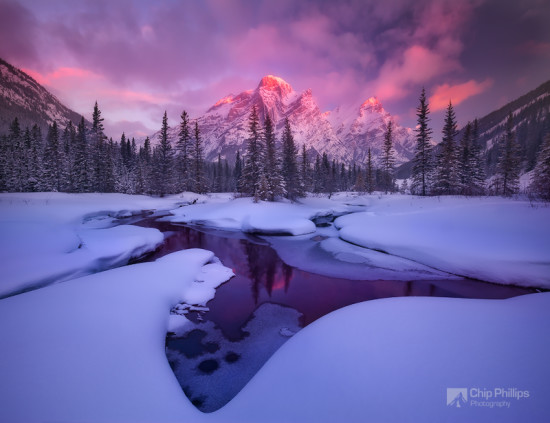
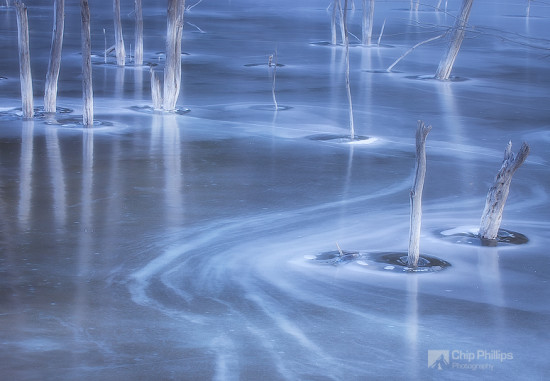
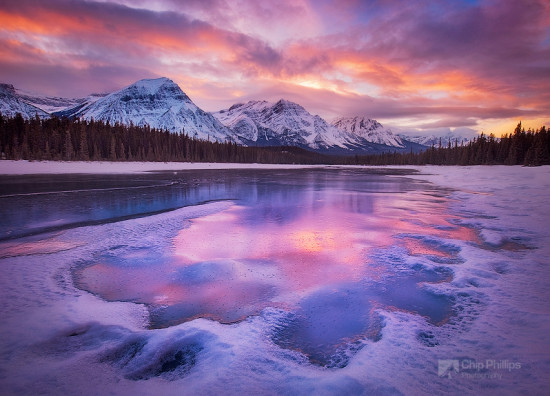
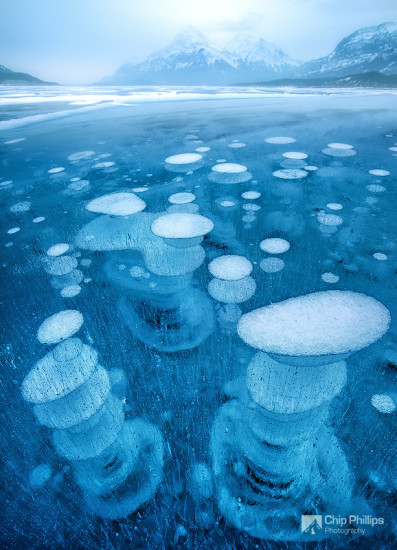



Chip,
Beautiful images, as always. I agree with you regarding condensation/icing over of lenses when transferring from warm to cold conditions. It has happened to me too many times! Another tip that I find helpful when shooting in winter…activate a couple of hand warmers and keep them in an interior pocket and keep your batteries in that pocket. I’ve found that a warm pocket can bring cold batteries back to life quite quickly.
Cheers,
Mike Putnam
Cold weather definitely presents its own challenges, I was in Boise this past Thanksgiving and set out for a setting full moon using the Boise Foothills as my pallet. Temps where around 14 degrees. I took off my lens cap on my 400mm and placed it in the waterproof pocket of my “breathable” Marmot jacket. After hiking over a hill in the snow I found a nice Composition took some shots, then placed my lens cap back on the lens for a longer trek as the moon was setting and the sun was coming up.. When I went to set up for another shot……My lens had frosted over from the condensation that collected on the cap while in my jacket. Morning shot over, but I did get a nice morning setting Full Moon.
Thanks for sharing your experience. I had an issue with my lens in warm humid weather…I had accidentally left it in the car that was air conditioned. As soon I took the lens out of the car it fogged up.
Chip,
All of these images are outstanding, thanks for sharing them!
“Taking warm equipment directly out into the winter cold can cause problems. Condensation can form and your lenses can fog up.”
This is backwards.
Hi Bob-Speaking from personal experience this has definitely been an issue for me the way I described. I can see it being an issue the other way around too-although it is usually not warm enough where I go :)
This happens all the time when im shooting Astro photography. As the night gets colder, the lens starts to fog up. Im sure there is a super technical description on the physics happening here but fogging and condensation seem to sum it up.